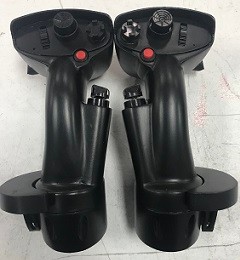We’re excited to introduce you to the always interesting and insightful John Li. We hope you’ll enjoy our conversation with John below.
Alright, John thanks for taking the time to share your stories and insights with us today. Often outsiders look at a successful business and think it became a success overnight. Even media and especially movies love to gloss over nitty, gritty details that went into that middle phase of your business – after you started but before you got to where you are today. In our experience, overnight success is usually the result of years of hard work laying the foundation for success, but unfortunately, it’s exactly this part of the story that most of the media ignores. Can you talk to us about your scaling up story – what are some of the nitty, gritty details folks should know about?
Scaling is an important part of growing. Our business literally doubled each year for the first 6 – 7 years.
This meant that in order to keep up, we had to anticipate the growth and account for it in manpower and parts.
We always bought extra parts into the next price break. For example, if each switch was $100 until you bought 19
then $80 till you bought 99…. I would pick either 20 or 100 for a quantity.
We always tried to have a bench of potential workers who could be activated relatively quickly.
We would enlist other companies that did similar work to help when we ran into a crunch!



Great, appreciate you sharing that with us. Before we ask you to share more of your insights, can you take a moment to introduce yourself and how you got to where you are today to our readers
I certainly did not expect to be where I am! All of this happened by serendipity. A hobby gone wild. A love of airplanes that blossomed into a business!
It all began as a young kid wanting to become a fighter pilot so I became an ENT surgeon instead.
Meanwhile, I got my private pilot’s license and also got into flight simulators.
Hobby and real career collided when a I patented a medical device used to recalibrate dizzy people’s balance.
This device was a transducer based forceplate that allowed the patient to become a “human powered joystick” which turned out to be remarkably similar to how an F-16 flight stick works. Since these devices used similar components, it made sense to hire an engineer who was working on a simulator version of the F-16 flight stick to build my patented device.
From there, we became fast friend and went into business together making simulator parts!
We’d love to hear about you met your business partner.
Back in the early 2000’s, the internet was just getting interesting. There was a chat-email group called simpits where people who were obsessed with fighter jet simulators got online and posted about their builds. I picked up ideas on how to build my first F-16 cockpit out of wood and cardboard. It was there that I met an engineer named Marv.
Marv was pretty amazing in that he was known for his meticulous designs and attention to detail. His cockpit build was far far superior to mine, and almost everyone else on the forum. (except those who had real airplane parts cut off of crashed aircraft).
Marv was known for his simulator replication of a real F-16 flight grip base that was particularly hard to replicate. This made him a bit of a celebrity on line.
I found out that the flight grip base used force transducers to detect force on the shaft of the base. My medical balance forceplate also required force transducers! What a coincidence!
One day I approached Marv to ask him if he would consider building my forceplate. To my surprise, he said yes!
Fast forward a year or so, Marv built my forceplate, and then in passing, he asked me to come to the ITSEC military simulation tradeshow in Orlando. I said yes! And found the show to be incredibly mind blowing.
Multi-million dollar fast jet simulators were on the show floor to fly. I was that proverbial kid in a candy store.
Then there were times when I had to man the tradeshow booth for Marv. As it turned out, my excitement rubbed off on customers which resulted in a boost in sales… This happened over and over to the point that Marv asked me to run the business….. and now look at us 14 years later!


How about pivoting – can you share the story of a time you’ve had to pivot?
Pivoting is probably our middle name. Pivoting is all about being adaptable and responsive to the needs of the market. We started Aerotronics as a one hit wonder. We specialized in the F-16 flight controller and that was our entire repertoire. Clearly this was not a healthy thing for a new company, so we decided to pivot to tool up for multiple items which at the time included an F-16 throttle and an F-16 rudder pedal system. From there, we pivoted to accommodate some newer 5th generation fighter controllers.
We pivoted to nail down our first jumbo contract by moving out of our garages and into a real building and changed our focus to Helicopter controllers.
Our hugest pivot was to turn attention away from simulators and apply our craft to making real grips that go into real airplanes. That has been so so gratifying. We build the weapons controllers in the AC-130 gunships. We build the flight controllers for the F-5E and F models… and also, we are building controllers for a new aircraft that the Air Force is rolling out in their Armed Overwatch program.
Who know what our next pivot will be.
Contact Info:
- Website: Aerotronicsllc.com
Image Credits
John Li


